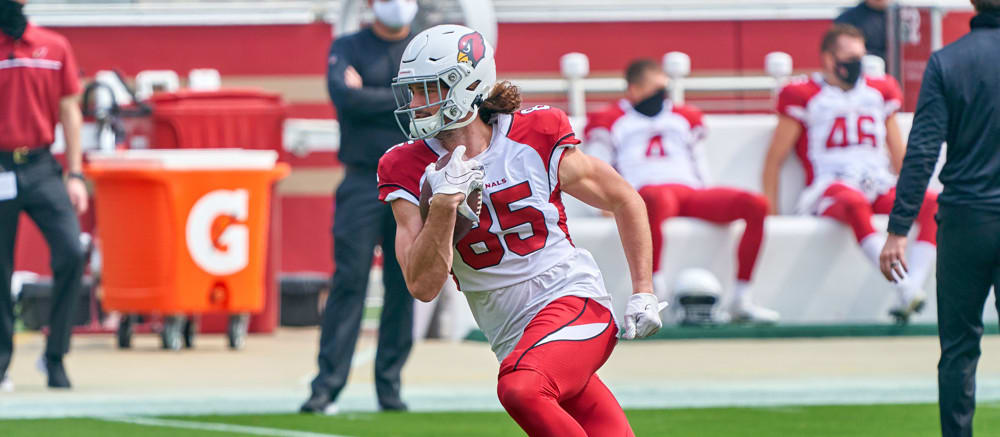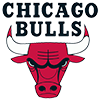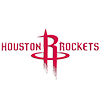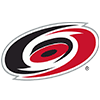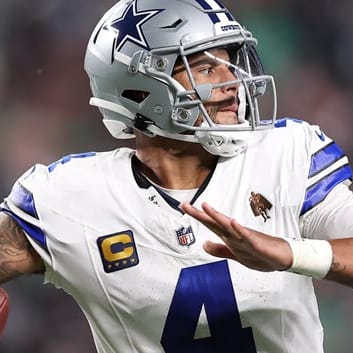Although the latest picks in your best ball draft are the ones most likely to miss and the least likely to hurt you if you do, there's still something to be said for taking those selections seriously, especially if you play with a lot of draft volume. This article will look at the current ADP of BestBall10 drafts to identify which players make the most sense for your final selections in the last two rounds or so.
For 12-team drafts the rounds 18 through 20 house picks 205 through 240. The players eligible for this article have ADPs of 205 onward. They'll be grouped by position and then listed by high ADP to low.
I might as well say first: try to have your quarterback and tight end situations settled before this range of the draft. Most of the viable picks are at running back, wide receiver and defense.
QUARTERBACK
Nothing really to report here, unfortunately. Andy Dalton (225.57) and Trey Lance (233.71) seem like the best options, but that's not saying much. It's best to settle your quarterback situation before this part of the draft.
RUNNING BACK
Alright, here we have some good candidates.
Tevin Coleman, NYJ (212.43)
The Jets presumably have a rookie running back in mind for the upcoming draft, because if not they would be penciling in Coleman as the starting running back over the likes of Ty Johnson, La'Mical Perine and Josh Adams. Then again, there's a chance that exact scenario occurs, if only because the Jets might not get the running back target they hope for in the draft.
Coleman is super unreliable, both for performance and durability reasons, but he's also uniquely explosive among NFL running backs and offers the high-range volatility that's valuable specifically in best ball leagues.
Kylin Hill, ROOKIE (234.0)
Mississippi State coaches are bashing Hill to anyone who will listen because they dislike his politics, but aside from that ridiculous issue affecting his draft capital it's difficult to justify Hill's cold market reception. Among rookie runners he probably shouldn't be going later than Rhamondre Stevenson (233.57), and he definitely shouldn't be going later than Jermar Jefferson (192.43). Veterans like Mike Boone, Benny Snell and Marlon Mack also have no business going ahead of Hill, who's arguably the draft's third-best three-down running back prospect, more or less tied with Javonte Williams, whose current ADP is 59.0. Williams will go higher because teams aren't looking to punish him for his values, but he's not necessarily a better player.
Sony Michel, NE (239.43)
Michel is a bust as a former first-round pick and probably isn't better than Damien Harris, but Harris struggled to stay healthy in 2020 and the running back position in New England is shaping up to be a bruising task. James White is the exception as a pass-catching specialist, but otherwise the New England running backs are going to get a lot of dive-type plays to hammer between the tackles and force defenses to crash toward the offensive line, which allows Cam Newton to play off that threat with his own run/pass option depending on the read. The first step to that kind of setup is establishing a credible inside threat, and Harris and Michel will be asked to run hard into the teeth of the defense.
More than other players in this range of the ADP, Michel would be a candidate for trade to another team if the Patriots determine they truly have no use for him. He shouldn't be going later than players like Darrel Williams, DeeJay Dallas, Ke'Shawn Vaughn, or Wayne Gallman, yet Michel generally has done exactly that in recent drafts.
Anthony McFarland, PIT (240.71)
McFarland has fallen into undrafted range, which is strange given that James Conner is gone. A speedy fourth-round pick out of Maryland last year, McFarland is unproven but less proven as bad than Benny Snell and especially Kalen Ballage, and in a very shallow running back class there's no guarantee the Steelers add especially strong competition. Snell has shown he's maxed out, but McFarland has remaining upside in a backfield that is void of proven competition and especially speed. McFarland might actually be my favorite option among these running backs, even without adjusting for price.
WIDE RECEIVER
Bryan Edwards, LV (204.86)
Edwards' slow rookie season is easily enough explained by his youth (he turns 23 in mid November) and the career year by veteran free agent pickup Nelson Agholor. Agholor is gone now. What's in Edwards' way at this point?
Edwards was a three-down starter for South Carolina before he even turned 18, and then he kept apace with the production of Deebo Samuel and Hayden Hurst, both of whom were significantly older than him. If Edwards can keep up with proven NFL talents even with a major age disadvantage, then he becomes a 'when not if' sort of prospect. That he produced above the South Carolina baseline in his age-20 and 21 seasons makes his eventual fantasy viability seem even more likely. Investing in Edwards last year may have been early, but there should be a point where Edwards investors reap a windfall. As things stand, 2021 is a fine candidate.
Josh Reynolds, TEN (219.71)
Perhaps Reynolds isn't very good, but the Titans are in no position to demote him even if they eventually reach that conclusion. They're up against the cap and subtracted all of Corey Davis, Jonnu Smith and Adam Humphries from the offense, and while they could target receivers in the upcoming draft they have no depth in the meantime – the WR3 might be Marcus Johnson – and they also have urgent needs at right tackle and cornerback. Even if Reynolds is a bum he should have to play at least 700 snaps this year, and he might not even be a bum!
Elijah Moore, ROOKIE (215.43)
Credited with a 4.35 40 at 5-10, 178 and armed with elite collegiate production, Moore doesn't have any obvious weakness in his profile. He's smallish of course, but if he were any bigger we'd be talking about a top-15 pick. For the functions he projects for in the NFL there's no meaningful criticism to make based on what's currently known. So why is a top-40 lock going this late in the order?
It will change after the draft, so target your shares now. That's not to say you shouldn't target more exposure following the draft, but the price will never be cheaper than it is now.
Sammy Watkins, BAL (230.43)
Sammy has burned a lot of fantasy investors over the years, but a close read of his NFL history shows he's still a standout talent. His lack of production was due to injury earlier in his career, Jared Goff after that, and then a role in Kansas City where he did a lot of the dirty work underneath and over the middle, playing almost like a tight end while tangling up defenders in the middle of the field.
In Baltimore Watkins projects to play outside, which generally entails a downfield function. That's the opposite of how Kansas City used him. That change should suit Watkins well, and Lamar Jackson is the best non-Mahomes passer Watkins has ever played with otherwise. There's a non-zero chance that Watkins is better than Marquise Brown this year, yet he's nearly going undrafted.
TIGHT END
Dan Arnold, CAR (233.43)
The tight end options this late barely exist, so you should generally try to have your TE situation resolved before this range of the draft. Generally the cutoff is Anthony Firkser at 200.43. For me there is basically just Arnold, Chris Herndon and Donald Parham after that. It's difficult to tell where Herndon is health-wise or in the eyes of the new Jets coaching staff, and Parham might not project well enough for inline functions to earn a big snap count on a Chargers team with lots of wide receiver depth. With Arnold signing in Carolina this offseason we know that Matt Rhule and Joe Brady have some level of intent assured, and their receiver depth chart is rather thin.
Arnold still isn't assured much for playing time or usage, but at this minimal price the risk is properly factored in. The upside might be slightly understated by the price, however. Arnold will not be competing with Ian Thomas or any other real tight end for snaps. Arnold will occasionally get in-line reps, but generally Thomas or someone else will handle those snaps. Arnold is a big slot receiver, and at 6-5, 220 he can't regularly block next to the offensive tackle. That's good for fantasy – it means that while Arnold might not get a lot of snaps, the snaps he does get will disproportionately go toward running routes.
Curtis Samuel was Carolina's slot specialist in 2020, and in his absence the Panthers only otherwise have David Moore around after lead wideouts DJ Moore and Robby Anderson. Moore is an intriguing player and may very well emerge as their clear WR3, but in the meantime there also exists the possibility that Arnold emerges as one of their primary replacements for Samuel's snaps. Arnold obviously doesn't play slot receiver the same way Samuel does, but he can run routes from that location all the same, and perhaps with an emphasis in the red zone specifically. Because tight end has a lower bar in fantasy than receiver, we don't need Arnold to do much to pay off at this price, and in the off chance that he secures half of Samuel's vacated reps Arnold would be in position to pay off at his current ADP cost.
DEFENSE
To me it looks like there are a lot of late-round options at defense, which incidentally occurs just as prices for teams like the Rams, Steelers and Ravens are as high as ever. I therefore prefer to wait at defense for the most part, especially as long as the following defenses are available at their current prices.
Los Angeles Chargers (208.0)
New York Giants (216.0)
Arizona (219.57)
The Giants already had a good defense in 2020 (22.3 points per game, ninth best), so it's surprising to see them faded to this extent after they added Adoree' Jackson to a suddenly strong secondary. The front three is solid and the run defense is sound, leaving only edge pressure as a remaining question. But again, they were already solid overall in 2020, so with the upgrade in the secondary factored in they're only a convincing edge rusher away from possessing top-five upside.
Otherwise, here's what I said in an article last week about the Cardinals and Chargers defenses:
At a lower cost you might consider instead the Chargers or/and Cardinals. Brandon Staley turned the Rams defense from decent to great last year, and now he's running the Chargers defense as head coach. The Justin Herbert offense should secure plenty of leads, which could tee up a career year for Joey Bosa. If Derwin James could for once have some injury luck then there are two first-team All Pros right there.
Kliff Kingsbury shouldn't get any credit for the Cardinals defense, but their pass rush is going to help them win games. Chandler Jones is a 20-sack threat, Isaiah Simmons is an imminent All Pro, Dennis Gardeck had seven sacks in 93 snaps last year, Markus Golden has twice posted double-digit sacks, and J.J. Watt's arrival gives them a huge boost on the interior. With Kyler Murray constantly bailing out Kingsbury on offense, that pass-rushing talent should get plenty of opportunity to show off.


